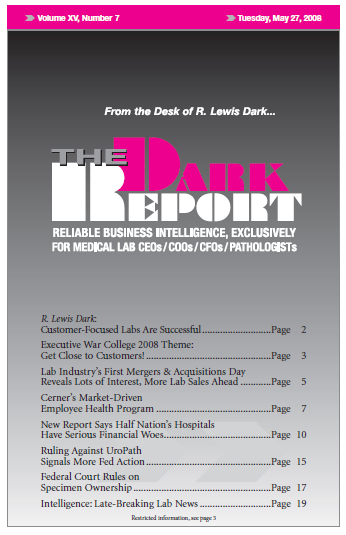CEO SUMMARY: Cerner Corporation is using a variety of strategies to reduce the cost of health benefits and improve the quality of care for its workers and dependents. Gluing the entire effort together is an integrated patient health record (PHR) and a host of electronic services, ranging from real time eligibility verification and claims adjudication …
Cerner’s Market-Driven Employee Health Program Read More »
To access this post, you must purchase The Dark Report.


